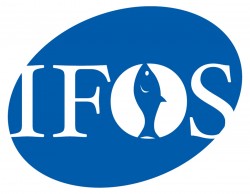Purity and Safety – 3rd Party Tested
Made in FDA-audited Facility
 |
View Third Party
|
Purity & Safety
Our patented purification process removes the following contaminants to extremely low levels:
- Methyl mercury
- Dioxin
- PCBs
- Heavy metals and trace metals
- Brominated flame retardants
- Potential organic pollutants
Manufactured in the United States in drug-approved facility with the following certifications:
- United States Pharmacopeia (USP). USP is an official public standards-setting authority for all prescription drugs, over-the-counter medicines, dietary supplements and other health care products manufactured or sold in the United States.
- NSF. NSF International is a not-for-profit, organization that certifies companies for public health and safety. NSF is the world leader in standards development, product certification and risk-management for public health and safety.
- cGMP Standards. FDA’s Current Good Manufacturing Practice certification.
- HACCP. Hazard Analysis and Critical Control Points certification as mandated by US FDA’s seafood HACCP regulation 21 CFR 123.
Standards are set to protect consumers: OmegaVia passes the purity standards set by all global purity standards authorities:
- GOED Voluntary Monograph (goedomega3.com)
- European Pharmacopoeia Standard (EU legislation)
- World Health Organization (WHO) allowable standards
- Council for Responsible Nutrition (CRN) omega-3 monograph
- Norwegian Medicinal Standards
Heavy Metals
OmegaVia products show below 0.1 parts per million for mercury and lead. This is 10X lower than Norwegian and European standards.
The low-temperature CO2 extraction and chromatography used for purifying OmegaVia is rarely used by other Omega-3 products. This technology eliminates environmental toxins to ultra-low levels.
Dioxins
OmegaVia has been tested for Dioxins and the oil passes both Norwegian and European standards.
PCBs
OmegaVia passes the ultra-stringent California Prop 65 standards for PCBs. As a California company, we must.
World Health Organization (WHO) focuses on PCBs harmful to human health. California Proposition 65 simply focuses on total PCBs. The Prop 65 limit is established as less than 0.09 ppm or 90 nanograms per day.
Before OmegaVia oils are chosen for manufacture, the oil raw material MUST pass Prop 65 PCB standards.

Are pills encoated ?
Hi Matt – yes, the pills are enteric-coated to prevent burping and reflux.
– Vin
Does the oil come from the body of the fish or the liver?
Hi Sarah – both.
– Vin Kutty
Is Omega Via organic, or can it still be qualified as synthetic fish oil?
Hi Dianna – we don’t call OmegaVia ‘organic’ even though the oil comes from wild fish. I’m not sure there is a definition of synthetic or organic fish oil that anyone agrees on. OmegaVia is quite different than eating fish – we concentrate the oil to increase the Omega-3 content. And we purify the oil to remove environmental contaminants. So the oil in OmegaVia is stronger and cleaner than the raw material we start with. Is it synthetic? Organic? I don’t know. It’s a matter of opinion.
Fish, unless they were farmed, can’t be “organic” as that term is defined for food cultivation. I think that’s what she was asking about.
Good point, EastCoaster. If I’m hiking along a remote mountain trail and I pluck a berry, I think of it as ‘organic,’ but I guess it is Organic since it was not farmed. But that’s where I was coming from.
I’m glad to see the thorough process you take to purify this product. But what about oxidation? Does your process protect the oil from oxidation and rancidity?
Thank you.
Kathleen
Hi Kathleen – the entire fish oil manufacturing process is made with near-paranoia of oxygen.
This is because oxygen is what starts the rancidity or oxidation process. Once the fish are caught, everything is done in an oxygen free environment and the oil is stored at minus 40 temps. Without oxygen and heat, rancidity is virtually frozen. When the oil is stored or transported in drums during encapsulation, it is always stored with a nitrogen ‘headspace.’ The drums are all flushed with nitrogen to eliminate oxygen from coming into contact with the oil.
Our OmegaVia Kids Chewie takes this one step further and uses argon headspace. The entire manufacturing is done without an oxygen molecule in sight.
So, yes, we do our best to keep the oil safe from oxidation.
hi the third party testing links dont work any more. can you provide links to or copies of recent testing to show heavy metal levels, PCBs etc plus oxidization score?
Hi Sam – sorry about that!
We’ve updated the link. You can now see all results – heavy metals, PCBs, and oxidation data for all OmegaVia products.